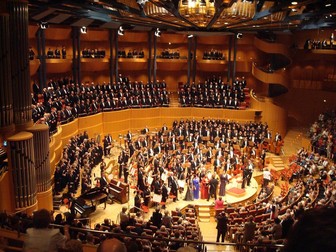Programme Music & Romantic Period (a KS3 module)
<p>This resource includes a scheme of work and powerpoints for a potential KS3 Music module looking at programmatic music in the romantic period. The module explores music by Grieg, Saint-Saens and Dukas whilst digging deeper into the functions of minor keys (G minor is the focus). Additionally, the module explores triple meter and writing in the style of a Waltz. The module then leads into composition with Musescore 4.</p>
